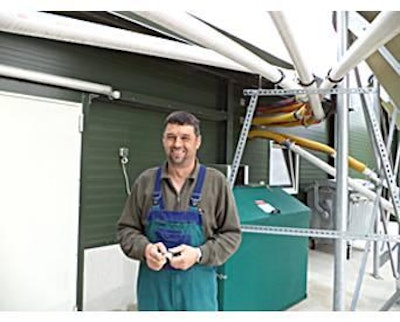
Mr. and Mrs. Clemens Pohlkemper produce some 900,000 broilers per annum, but poultry is a relatively new venture for the couple.
The Pohlkemper family only started broiler farming in 2002, having previously concentrated on pig and calf production. The location of their farm, however, meant that any expansion of their traditional activities was not possible, and to grow their business they had to look for a new direction.
Working in a highly populated area
The Pohlkempers' farm is near Schoppeningen, in North-Rhine Westphalia, Germany's most populous state. They farm a total of 97 hectares, but proximity to the local town meant that growing the pig and calf businesses was not possible. A further difficulty was that the land they owned could not take more pig manure.
The family can trace its connection to the farm back to at least 1340, so no doubt various avenues have been taken over the years, but modern broiler production appears to be paying off for them.
They now rear Ross 709 birds, producing 7.4 batches per annum. Most birds are reared to 43 days, or 2.6 kg, while one-third is harvested at 35 days. At any one time, the farm can hold 120,000 birds. Harvested birds are sent to Pluikon.
A number of factors influenced the Pohlkempers, who rear their birds without help, to enter poultry production, not simply the difficulties of expansion close the main farm buildings. Poultry manure is cheaper to dispose of, and demand is still strong for poultry meat and it remains a profitable product, says Clemens.
The first poultry house, measuring 80 by 20 meters, was erected in 2003 on land owned by the Pohlkempers outside of town.
Energy savings
In 2010, the decision was taken to build two more houses, measuring 90 by 20 meters. However, these houses were used to trial a heat recovery system in an attempt to keep down energy costs.
The couple wanted their new venture to be energy efficient and, over three to four months, worked with Reventa to install an air-water heat exchanger, which allows for heated water to be distributed via air-water heat exchangers and exhaust air discharged 10 meters above ground. Heat from the houses themselves can also be used to heat incoming air. The new building, measuring 80 by 20 meters, has a higher rate of insulation.
The system offers the family significant energy savings -- approximately 30-40 percent -- and the investment should pay for itself in three to four years.
Poultry production now accounts for some 60 percent of the farm's total turnover.

















